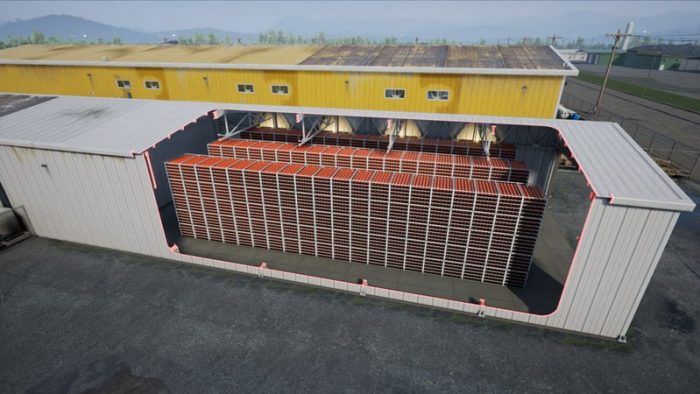We’ve been reporting on EnerVenue’s attempt to scale metal-hydrogen batteries (historically used to power the International Space Station) for renewable energy projects. The chemistry offers a lot of potential to outshine lithium-ion-based batteries in many applications, as we dove into in this pandemic-era edition of The Pitch:
“The net result is a battery that lasts forever, is super durable in harsh climates and is true zero maintenance,” said CEO Jorg Heinemann at the time. “Think desert based or environments where it’s extra hard to go in and do the maintenance. That means we’re best for grid-scale storage or large commercial storage in a hot desert environment where maintenance is a significant factor. … A huge portion of the LCOE in these plants is long-term maintenance – up to a third actually. This is for a customer who wants a battery asset to last as long as the solar panels and won’t have to touch it.”
A lot has occurred since then, such as a second-generation product, an expanded production facility and completed UL testing. This week, pre RE+, EnerVenue launched its next-generation Energy Storage Vessels (ESVs).

“Our new Energy Storage Vessels advance our solution’s energy capacity, density, and power performance, and continue to add to our battery’s advantages over lithium-ion systems,” Majid Keshavarz, Chief Technology Officer, EnerVenue. “As lithium supply chain problems and other factors continue to threaten its long-term viability in stationary storage, ESVs offer clear differentiation.”
Already backed by large-scale deals from Pine Gate Renewables, Nicon Industries’ Green Energy Renewable Solutions and others, volume manufacturing and the new design of EnerVenue’s next-generation ESVs are expected to significantly accelerate profitability for the company.
The highlights of the new ESVs include the following improvements over the previous versions:
- Capacity: Next-generation ESVs deliver 150% more energy storage capacity than previous versions.
- Density: With improved materials efficiency, the new ESVs increase energy density by 100%.
- Power: Nominal power performance improves by 150%.
- Monitoring intelligence. Each ESV is monitored for temperature, pressure, and voltage—improving operations with more granular and accurate vessel and state-of-charge data.
- Temperature performance: Already built to operate in extreme hot and cold environments, the new ESVs are further optimized for consistent performance across an especially wide range of temperatures.
Next-generation ESVs have a 30-year 30,000-cycle expected lifespan, and a projected 86% capacity after 30,000 full cycles. Because metal-hydrogen ESVs pose zero thermal runaway risk and no risk of fire propagation, deployments require no complex and costly fire suppression or robust HVAC systems.
The next-generation ESVs can flexibly cycle up to three times per day, at 2 to 12-hour discharge rates, enabling unique applications and business models for developers, integrators, and owners. Revenue stacking opportunities can also be maximized because of the solution’s applicability to so many clean energy use cases.
Our metal-hydrogen solution uses Earth-abundant materials and, in contrast to lithium-ion systems, does not require augmentation to maintain performance over the battery’s 30-year, 30,000-cycle lifespan. Fire-prone lithium-ion systems also require robust HVAC and fire suppression systems that our next-generation ESVs do not, reducing customers’ cost and operational requirements.”
The next-generation ESVs are backed by EnerVenue’s Capacity Assurance, an extended warranty for stationary batteries offering a 20-year/20,000-cycle warranty extension that guarantees at least 88% battery capacity remaining after that period.
— Solar Builder magazine
Leave a Reply
You must be logged in to post a comment.